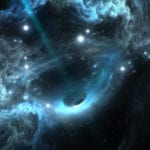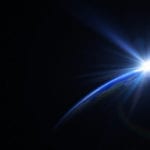 Mysteries
Mysteries  Mysteries
Mysteries  History
History 10 Surprising Stories About the Texas Rangers
 Humans
Humans 10 Philosophers Who Were Driven Mad by Their Own Theories
 Miscellaneous
Miscellaneous 10 Video-Game-Worthy Weapons and Armors from History
 Weird Stuff
Weird Stuff 10 Psychics Who Accurately Predicted Wartime Events
 The Arts
The Arts 10 Pieces of Art Inspired by a Broken Heart
 Health
Health 10 Science Fiction-Sounding New Medical Treatments
 History
History 10 Surprising Facts About the Father of Submarine Warfare
 Space
Space Ten Astonishing New Insights into Alien Worlds
 Weird Stuff
Weird Stuff 10 Bizarre Summer Solstice Rituals Still Practiced Today
 Mysteries
Mysteries Top 10 Haunting Facts About the Ghost Ship MV Alta
 History
History 10 Surprising Stories About the Texas Rangers
 Humans
Humans 10 Philosophers Who Were Driven Mad by Their Own Theories
Who's Behind Listverse?

Jamie Frater
Head Editor
Jamie founded Listverse due to an insatiable desire to share fascinating, obscure, and bizarre facts. He has been a guest speaker on numerous national radio and television stations and is a five time published author.
More About Us Miscellaneous
Miscellaneous 10 Video-Game-Worthy Weapons and Armors from History
 Weird Stuff
Weird Stuff 10 Psychics Who Accurately Predicted Wartime Events
 The Arts
The Arts 10 Pieces of Art Inspired by a Broken Heart
 Health
Health 10 Science Fiction-Sounding New Medical Treatments
 History
History 10 Surprising Facts About the Father of Submarine Warfare
 Space
Space Ten Astonishing New Insights into Alien Worlds
 Weird Stuff
Weird Stuff 10 Bizarre Summer Solstice Rituals Still Practiced Today
Ten Breathtaking New Discoveries about Black Holes
Outer space is home to all manner of weird and wonderful objects—neutron stars, nebulae, galaxy clusters. Among the most fascinating are black holes. Since German astronomer Karl Schwarzschild first predicted their existence in 1916, researchers have amassed a wealth of knowledge about the elusive giants.
As astronomy becomes more and more advanced, scientists begin to learn more about the nature of black holes. Magnetic swirls, jets of radio waves, wormhole theories, record-breaking explosions. Over the last few years, stargazers have seen it all and have begun answering some of the questions others have posed.
Related: 10 Comets That Have Gone Missing
10 Unprecedented Glimpse of Light behind a Black Hole
Black holes are cosmic goliaths that guzzle up anything and everything that crosses their path. Their gravitational attraction is so immense that nothing, not even light, can escape their pull. So you would expect that it would be impossible to detect light from behind a black hole. Surely any emissions would have been sucked in, right?
Albert Einstein disagreed. In 1915, the German scientist proposed that extremely heavy objects like black holes should distort the fabric of time and space, allowing light to travel around them. This was a key part of his theory of general relativity, an idea which revolutionized modern physics. Scientists have spotted this effect—known as gravitational lensing—before, but nobody had ever managed to detect light from behind a black hole until recently.
Then, in July 2021, astronomers at Stanford University cracked it. The team had been examining a supermassive black hole at the heart of a distant galaxy called Zwicky when they noticed strange X-ray emissions that they couldn’t quite put their fingers on. They were used to detecting signals from in front of the black hole, but these new ones were different. These flashes showed up later, and the light was less bright, like echoes arriving after the main burst. After much analysis, the researchers confirmed that these mysterious detections were, in fact, pulses of light that had arced round the edge of Zwicky’s black hole, once again validating Einstein’s ground-breaking theory of relativity.[1]
9 Astronomers Capture Magnetic Swirls around the Rim of a Black Hole
In 2019, astronomers made history when they released the first image of the outskirts of a black hole. Black holes themselves are impossible to photograph. The trailblazing snap captured the shadow of M87*, a supermassive black hole 55 million light-years away. Scientists compiled the photograph using data from a global network of detectors known as the Event Horizon Telescope.
Two years later, in another never-before-seen feat of science, the team unveiled a new photograph, providing yet more crucial insight into the mysterious behavior of the celestial behemoths. Finally, in March 2021, researchers revealed another image of M87*, only this time showing magnetic field lines spiraling around its shadow.
Black holes like M87* are surrounded by a glowing ring of hot cosmic matter. Scientists analyzed the light from this region and the direction of the vibrations. Black holes are known to spit out vast jets of matter, but no one is sure why. Scientists hope that the magnetic swirls could help explain this peculiar phenomenon.[2]
8 Observatories Detect Record-Breaking Explosion
In 2016, NASA’s Chandra X-ray Observatory began picking up unusual readings from the depths of outer space. The Ophiuchus galaxy cluster, some 390 million light-years away, appeared to contain a strange curve. At first, scientists dismissed the idea of it being caused by a black hole because the sheer amount of energy involved seemed to be too immense to be true.
But as more data came in, the evidence began to stack up. Eventually, NASA realized that they had discovered, in their words, the “biggest explosion seen in the universe.”
Galaxy clusters are some of the largest known structures in the universe. They are made up of thousands of galaxies, dark matter, and hot gas. Toward the middle of the Ophiuchus cluster lies a large galaxy that contains a supermassive black hole. Scientists reckon the colossal blast could have stemmed from that gigantic space guzzler. The energy released in the explosion is said to be five times more powerful than the previous record-holder, a vast eruption in the MS 0735+74 galaxy cluster.
Simona Giacintucci, the lead author of the study, compared the blast to the 1980 eruption that tore the top off Mount Saint Helens. “A key difference is that you could fit fifteen Milky Way galaxies in a row into the crater this eruption punched into the cluster’s hot gas.”[3]
7 Shape-Shifting Objects Lurking near the Milky Way’s Black Hole
In recent years, astronomers have noticed several strange shape-shifting objects skulking away in the Milky Way. Researchers at the University of California, Los Angeles, discovered them circling the black hole at the heart of our galaxy. The ones furthest from the black hole seem to be the most compact. But they begin to stretch as they approach the event horizon.
These bizarre globules of gas have been dubbed G objects. Scientists reckon they form when two stars are merged together by the black hole’s immense gravitational pull.
Scientists have spotted six mutating G objects in the Milky Way, although there may be more elsewhere in the universe. Nobel Prize winner Andrea Ghez came across the first G object back in 2005. But it was seven years before researchers in Germany discovered the second.[4]
6 Supermassive Black Holes Could Be Wormholes in Disguise
Wormholes are cosmic tunnels that weave across space, transporting travelers to anywhere in this universe and possibly into others. Over a hundred years ago, Albert Einstein explained that wormholes could exist, but nobody knows for sure if they actually do.
For years, astronomers have searched the skies for evidence to confirm or reject the existence of wormholes. But in November 2020, researchers published a paper suggesting that they may have stumbled upon them without even realizing it. Mikhail Piotrovich proposed the idea that certain black holes could, in fact, be openings to wormholes.
Black holes and wormholes have more in common than you might imagine. They’re both extraordinarily dense, and both have immense gravitational pulls. The major difference is that nothing can exit a black hole after entering, whereas any object going into a wormhole could, in theory, travel back out. Piotrovich and his team hope that studying gamma-ray emissions could help confirm their fascinating theory.[5]
5 Black Holes Merge Causes Light of a Trillion Stars
Black holes are known for lurking in the inky blackness of space, crashing into each other and merging. However, until recently, scientists assumed that this process was invisible, playing out under the shroud of darkness.
But now, researchers believe that when black holes collide, a blinding surge of light is released a trillion times brighter than the sun. Ligo, the gravitational wave observatory, detected a dazzling flare back in 2019, which scientists think was caused by two black holes merging in the presence of a third black hole. The surrounding gas and dust act like floodlights for the collision, lighting up the cataclysmic event.
“This supermassive black hole was burbling along for years before this more abrupt flare,” explained Matthew Graham, the lead author of the study. “We conclude that the flare is likely the result of a black hole merger.”[6]
4 Scientists Photograph Jet of Radio Waves
The Event Horizon Telescope (EHT) is an incredible feat of engineering. It consists of eight radio observatories dotted around the world. Collating their data creates one giant, high-precision telescope the size of the Earth.
In July 2021, the EHT project released a series of images of a black hole blasting out jets of radio waves. The black hole at the center of the Centaurus A galaxy is known for emitting large amounts of energy, much more than the one in the Milky Way. But this marks the first time scientists have captured a black hole with such clarity as it spurts material into the skies. The EHT allows scientists to photograph the gigantic jets with ten times higher accuracy and sixteen times better resolution than was possible before.[7]
3 Researchers Detect a Black Hole Gobbling up a Neutron Star
Black holes and neutron stars are among the densest, most exotic objects in the universe. When they crash into each other, all hell breaks loose. A collision is a cataclysmic event. The two behemoths merge with such intensity that it creates large waves that echo across space and time.
Over the last few years, scientists have seen two black holes colliding and two neutron stars colliding. But until recently, capturing a black hole crashing into a neutron star was a much more difficult challenge.
Then after much waiting, like buses, two came along at once. In January 2020, astronomers received signals from two black hole-neutron star mergers within ten days of each other. Scientists believe that both events took place around a billion years ago. Because space is so vast, the cosmic echoes only made it to Earth last year. In both cases, the black hole was so huge that it devoured the neutron star.[8]
2 Astronomers Puzzled by Black Hole with “Impossible” Mass
In 2020, scientists were left scratching their heads after detecting a black hole collision that, according to theory, should have been impossible. At least one of the goliaths had a mass 85 times that of the sun, which scientists used to believe was too large to be involved in that kind of collision.
After the two crashed into each other and fused, they produced a black hole almost 150 times heavier than the sun. That is heavier than any black hole previously detected.
The distant merger is thought to have taken place when the universe was only half of its current age. Theoretical astrophysicist Ilya Mandel described the discovery as “wonderfully unexpected.”[9]
1 Are Black Holes a Source of Near-Infinite Energy?
British physicist Sir Roger Penrose is a pivotal figure in astronomy. In 1969, he put forward the idea that black holes could be used by future civilizations to generate energy. In theory, an object placed close to but not inside a black hole should acquire negative energy. Penrose suggested that the object should then split in half, with one half being sucked in by the black hole and the other half recoiling away. The half that recoiled should now have gained energy from the black hole. This energy, if harnessed, could be used to power an entire planet.
As things stand, such a feat is well beyond the limits of current technology. But was Penrose correct? In 1971, physicist Yakov Zel’dovich devised an experiment that could take place here on Earth to test Penrose’s far-flung theory. Unfortunately, due to technological constraints, Zel’dovich’s experiment was also impossible.
Fast forward to June 2020 when, over half a century since Penrose first dreamt up the idea, researchers at the University of Glasgow were finally able to demonstrate his theory. The team built a ring of speakers to recreate the rotational effects of a black hole. They then listened as beams of sound waves became twisted and warped just like the object would have been in Penrose’s original theory.
“We’re thrilled to have been able to experimentally verify some extremely odd physics a half-century after the theory was first proposed.” Professor Daniele Faccio told reporters. “It’s strange to think that we’ve been able to confirm a half-century-old theory with cosmic origins here in our lab in the west of Scotland, but we think it will open up a lot of new avenues of scientific exploration.“[10]








